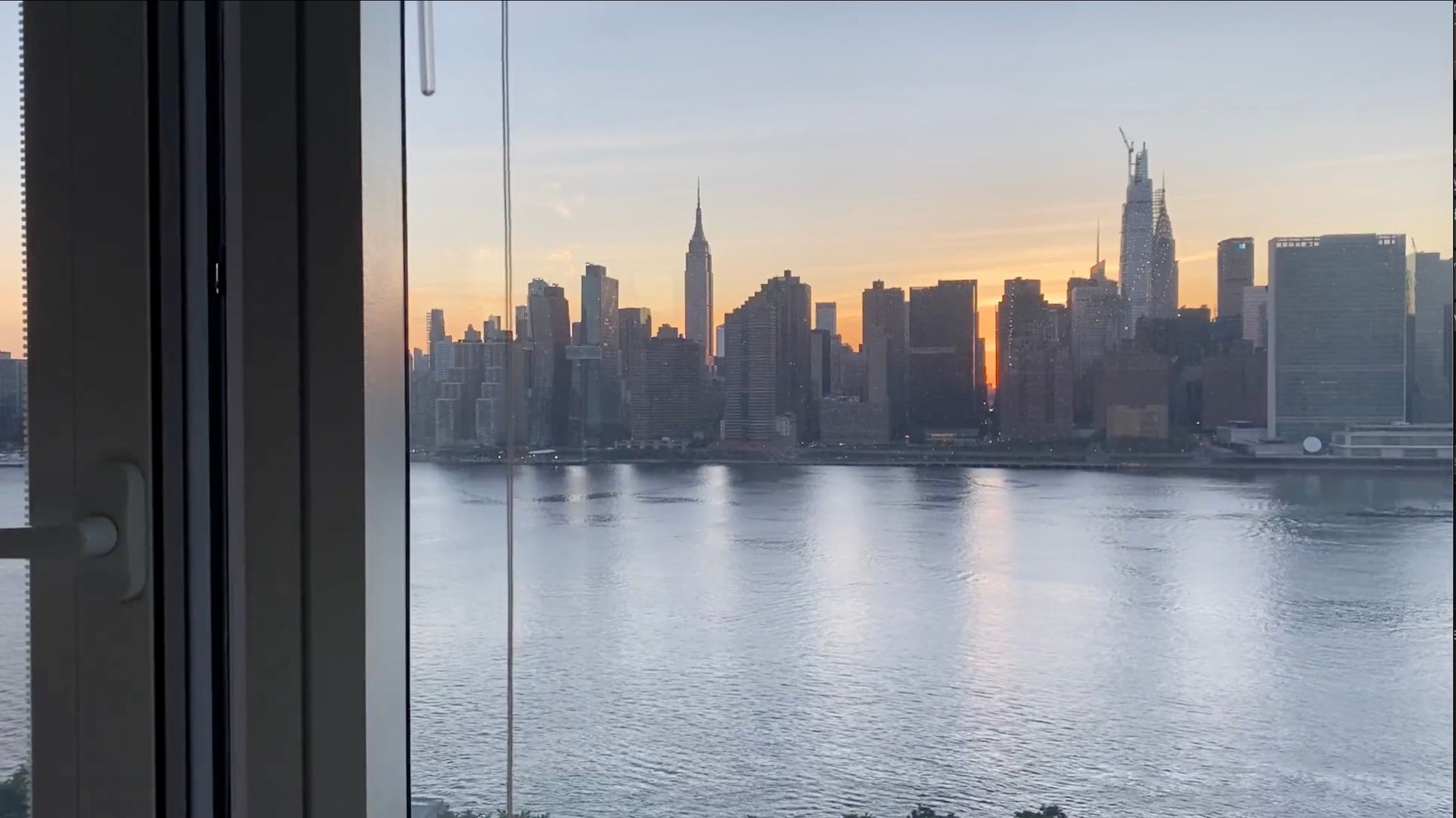Humane Ingenuity 25: Out of Body Experiences
by Dan Cohen
If you need a break, have been at home for a very long time, or are sick of the view out of your window, you can try Window Swap, which shows a video clip of the view out of someone else's window.
 Simone Tengattini's window in Villongo, Italy
Simone Tengattini's window in Villongo, Italy
 Kinzah Iqbal's window in Singapore
Kinzah Iqbal's window in Singapore
 Lina Blau's window in Aeschiried, Switzerland
Lina Blau's window in Aeschiried, Switzerland
 Fernando Mattei's window in Long Island, New York
Fernando Mattei's window in Long Island, New York
Go full screen and put the sound on for minor, but somehow reassuring, sounds of domestic life elsewhere on the planet.
A follow-up to HI24's discussion of the feeling of being with other people, online and off: Much of my time at work is now lived within Teams, the omnibus collaboration software from Microsoft. This week they added "Together Mode" to their video conferencing system, which replaces the grid of faces (which will be, along with masks, one of the canonical memories of 2020) with a digitally created lecture hall in which all of the meeting participants are seated.

Evidently this mode comes from digital communication research at Stanford, but as I joked on social media, Together Mode feels like a Borges story about a lecture. Or perhaps a Philip K. Dick story, or any fiction where reality is elusive and replicative. It is true that you are presented a more "natural" view of a collection of people than the grid, and since I work in a university it is even more familiar, and yet since you yourself are in the lecture hall in a strangely out-of-body, disassociated way, as if you are both the lecturer and the student, I'm not sure that the mode provides the warm fuzzies of realistic physical presence that Microsoft imagines.
Also, to show everyone on the videoconference well, the virtual lecture hall seating is very steep, which for some reason—probably the historian of science part of my brain—makes me think of nineteenth-century surgical theaters.
 (Surgical theater seating detail from The Agnew Clinic by Thomas Eakins. I have kindly omitted the actual surgery part of the painting.)
(Surgical theater seating detail from The Agnew Clinic by Thomas Eakins. I have kindly omitted the actual surgery part of the painting.)
The indefatigable historian Mary Dorothy George spent decades studying and describing British satire that was printed in the late eighteenth and early nineteenth centuries. George’s magisterial, obsessive, multivolume Catalogue of Political and Personal Satires Preserved in the Department of Prints and Drawings in the British Museum was the result of this scholarship. If you would like to do an exhaustive search for political cartoons of British lords farting, now you know where to look.
Last year, James Baker and Andrew Salway took a half-dozen volumes of George's Catalogue and turned them into a computationally available text corpus. Now Baker has fed that corpus into a GPT-3 engine, to create simGeorge, an AI bot that magically generates captions for satirical prints that have never existed.
Here's a sample description of a machine-imagined political cartoon, which seems all-too-plausible:
The Regent, very drunk, sups in the kitchen at the Pavilion, at a table covered with invitations to dinner. He leans back in his chair, pugnacious and insolent, his eye and mouth watering. He holds a glass and a wine-bottle, brandishes a wine-glass to his mouth...His chair is decorated with the Prince’s feathers, oak-leaves, and roses. On the wall behind...is a picture...of Princess Charlotte drinking from a decanter; she leans over the counter holding a fan. She wears a loose high-waisted dress, with a towering feather, a medallion of a crowned head on a halo, and a coronet with a ducal coronet.
SimGeorge presents the intriguiging possibility of a flipped version of The New Yorker's caption contest, where the AI writes a caption, and artists imagine and draw the fictional scene.
Through fictional repetition, simGeorge also helpfully reveals the common tropes of political satire, such as the role of status, gender, language, and, yes, bodily functions. As Baker notes, using GPT-3 in this way provides a new pathway into a writer and her subject's "themes and trends, omissions and constructions." These include not just the nature of Georgian satire, but of Mary Dorothy George and her era in the early twentieth century, which means that simGeorge is, according to Baker, "lightly fattist and ageist" and also, on occasion and unsurprisingly, not so lightly racist.
With rising sea levels a growing threat to art and architecture, one cultural heritage organization has decided to go ahead and digitize an entire island in Venice at an extremely granular level. They are starting this work as you read this newsletter.
From 6th to 17th July, a team from Factum Foundation will be travelling to Venice to start the recording of the Island of San Giorgio Maggiore. Working with the Fondazione Giorgio Cini, Ecole Polytechnique Fédérale de Lausanne (EPFL) and Iconem, the aim is to record the entire island using several recording methods such as aerial and ground-based photogrammetry and LiDAR recording.
 (Albumen print of a stereograph of San Giorgio Maggiore, c. 1850-1880. Gezicht op Venetië, gezien vanaf de klokkentoren van de Basilica di San Giorgio Maggiore. Rijksmuseum permalink. Public domain, with thanks to the Rijksmuseum.)
(Albumen print of a stereograph of San Giorgio Maggiore, c. 1850-1880. Gezicht op Venetië, gezien vanaf de klokkentoren van de Basilica di San Giorgio Maggiore. Rijksmuseum permalink. Public domain, with thanks to the Rijksmuseum.)